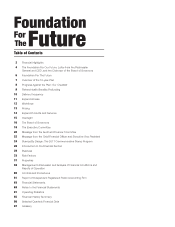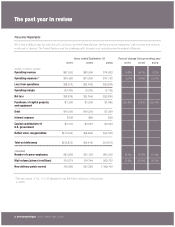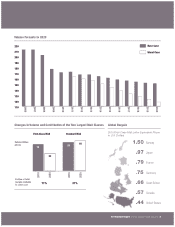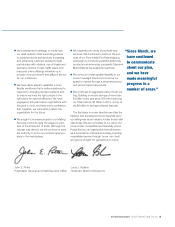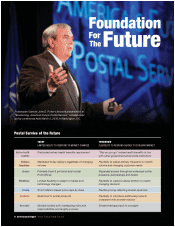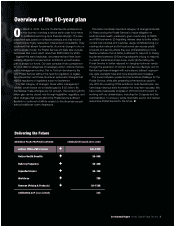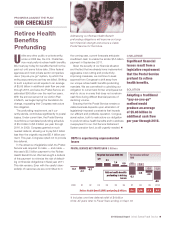US Postal Service 2010 Annual Report Download - page 12
Download and view the complete annual report
Please find page 12 of the 2010 US Postal Service annual report below. You can navigate through the pages in the report by either clicking on the pages listed below, or by using the keyword search tool below to find specific information within the annual report.
10 2010 Annual Report United States Postal Service
Throughout 2010, the Postal Service
sought to engage its stakeholders —
including its customers, regulators,
Congress, and the American people — about
altering the frequency of delivery to a fi ve-day-
a-week schedule. We are currently required
to deliver to more than 150 million addresses
six days a week at a cost of almost $30 billion
per year. Reducing delivery days to 5 days per
week will substantially decrease our highest
cost activity and better match costs with declin-
ing volumes.
On March 30, based upon extensive
feedback from our customers and analysis of
impacts to the Postal Service, we submitted
a fi ling to the Postal Regulatory Commission
(PRC) regarding plans to make this important
transition.
Mail volumes are generally at their lowest on
Saturdays and more than a third of U.S. busi-
nesses are closed on Saturdays. A national Gal-
lup Poll found that businesses and households
believed Saturday would be the least disruptive
day to eliminate mail delivery.
PROGRESS AGAINST THE PLAN
OUR CHECKLIST
Delivery
Frequency
Indeed, the same Gallup survey showed
that two-thirds of Americans would rather have
delivery days reduced than have increases in
postage or have the government subsidize the
Postal Service’s losses with taxpayer funds.
Reducing street delivery to fi ve days would help
rebalance postal operations with the needs
of today’s customers, while saving the Postal
Service more than $3 billion a year, and reduce
our energy use and carbon emissions.
Nearly all Saturday mail operations would
continue even if we transition to a fi ve-day
delivery schedule. Post Offi ces would remain
open on Saturdays, access to P.O. boxes
would continue, Express Mail would continue to
be delivered seven days a week, and incoming
mail would still be processed. Only Saturday
street delivery would be suspended.
In order for the fi ve-day delivery plan to
become reality, Congress must discontinue an
existing legislative impediment. In the past six
months, the Postal Service has taken important
steps toward this goal. In addition to fi ling the
fi ve-day delivery plan with the PRC, the Postal
Service is preparing for implementation and
has taken every opportunity to demonstrate
the importance to Congress of transitioning
to a fi ve-day delivery schedule as a vital part
of strengthening the fi nancial condition of the
Postal Service. ■
CHALLENGE
Mail volume deliveries
no longer cover the
costs of a six-day
delivery schedule.
SOLUTION
Moving to a fi ve-day
delivery schedule
would signifi cantly
reduce our costs with
minimal disruption to
customers.
Public Opinion Regarding Delivery
Frequency
Source: Gallup Poll June 17-18, 2009
WOULD YOU STRONGLY FAVOR, FAVOR, OPPOSE OR
STRONGLY OPPOSE REDUCING THE NUMBER OF
MAIL DELIVERY DAYS FROM 6 DAYS TO 5?
Share of respondents, percent
2
10
14
23
52
strongly
favor
strongly
oppose
no
opinion
favor
oppose
The Postal Service delivers to more than 150
million delivery points on a typical workday.



